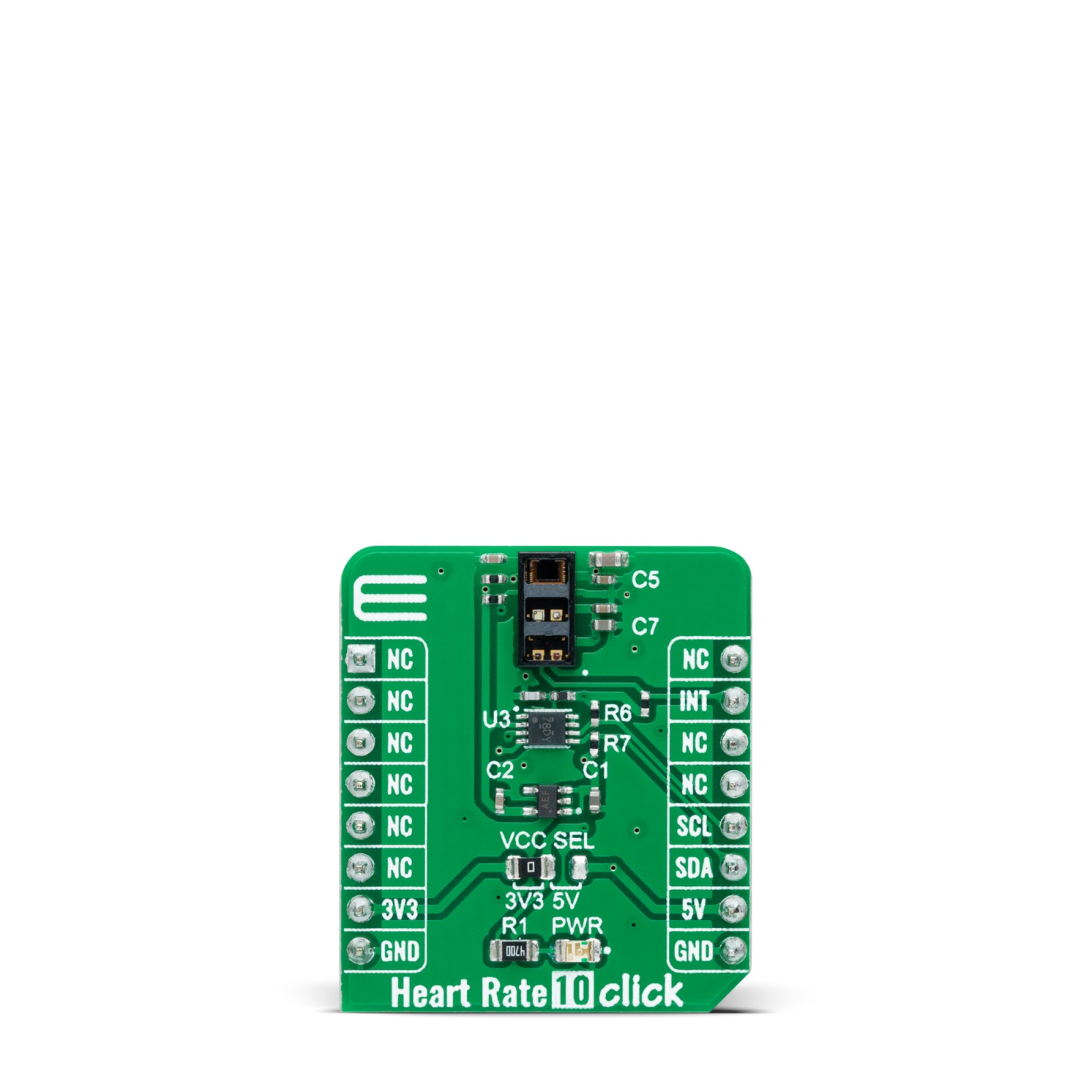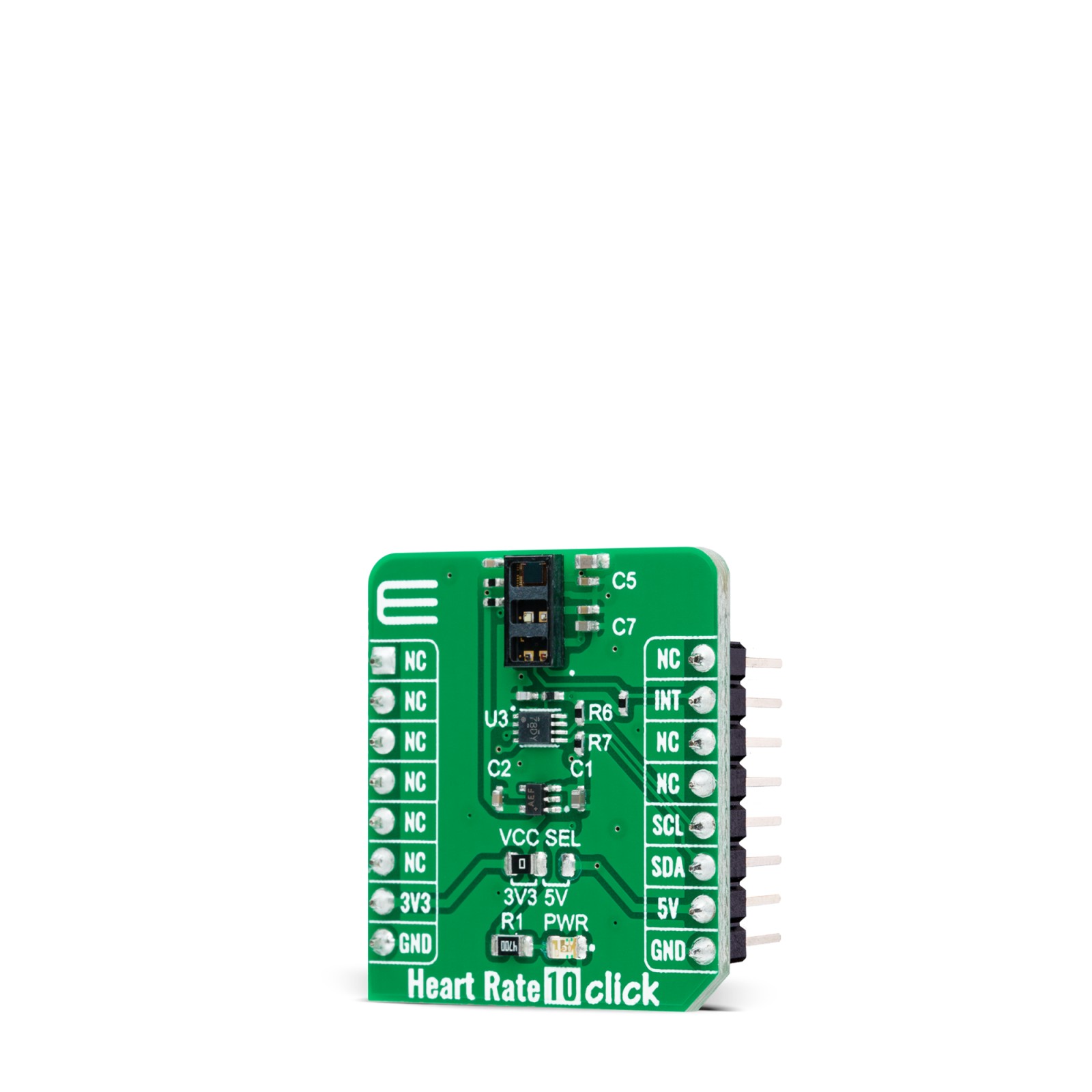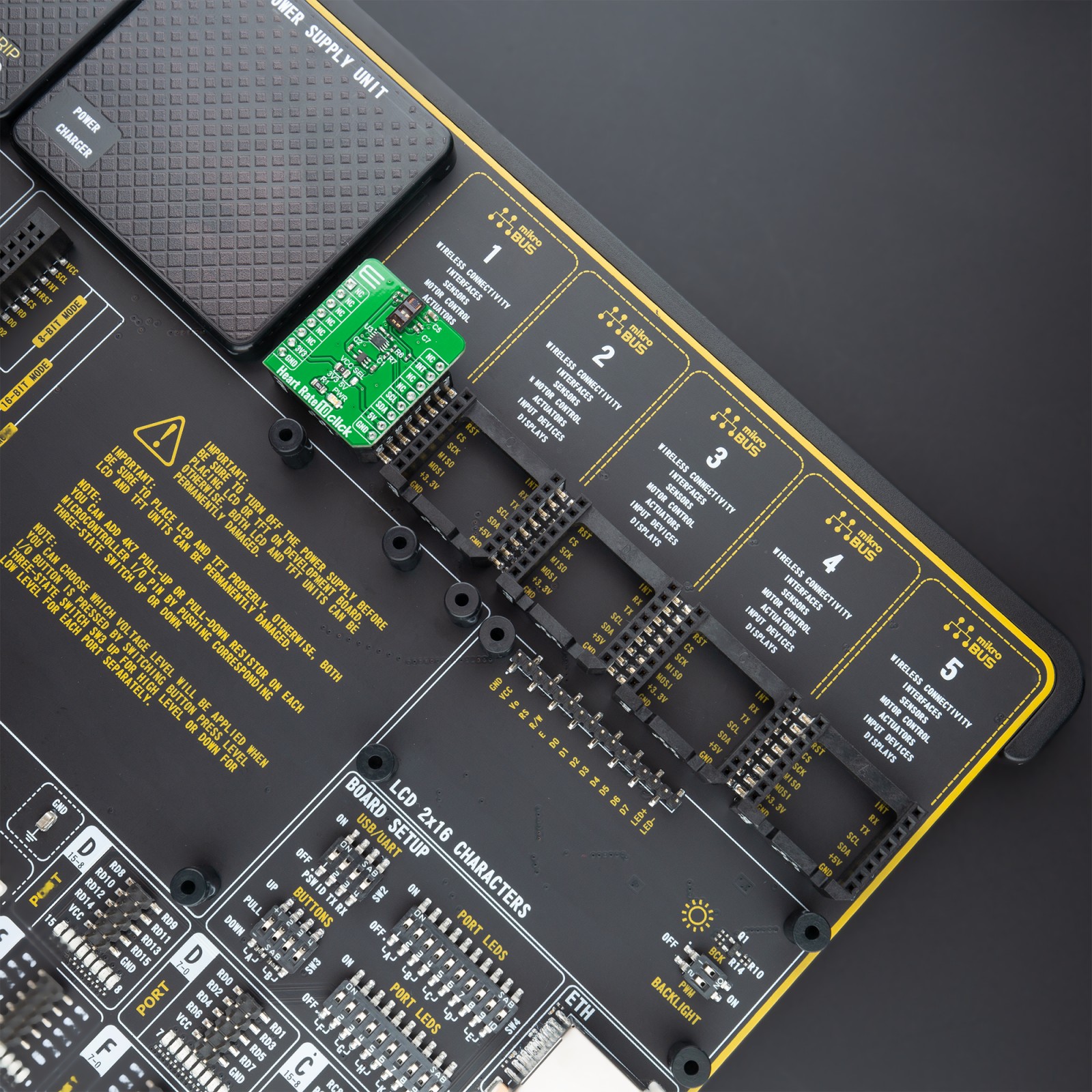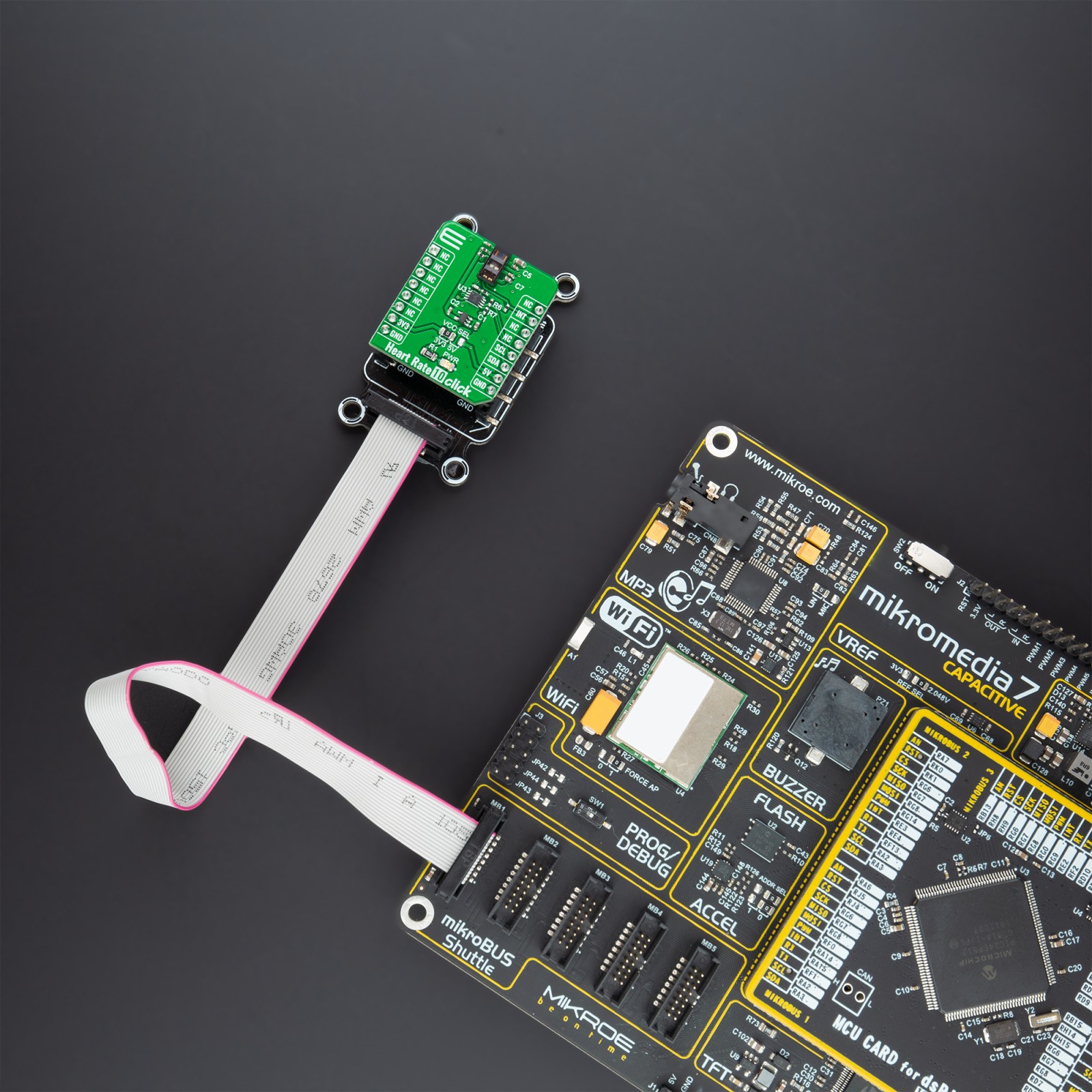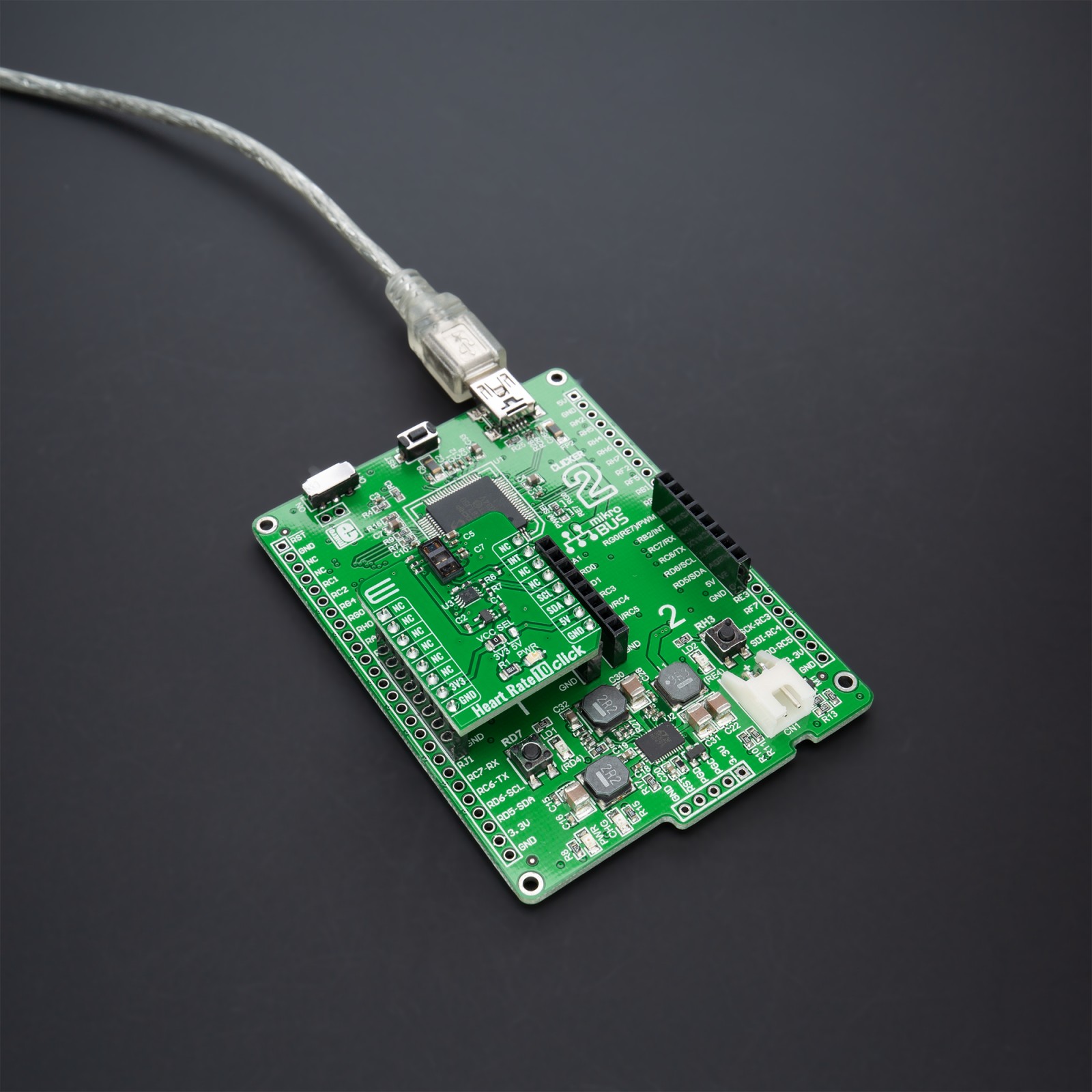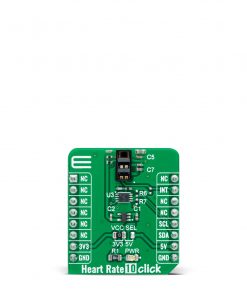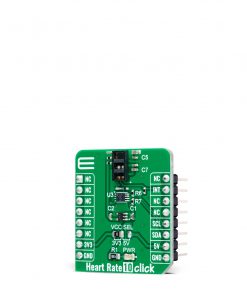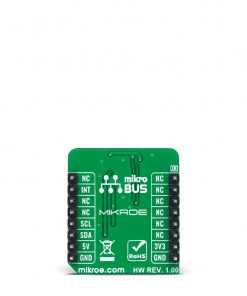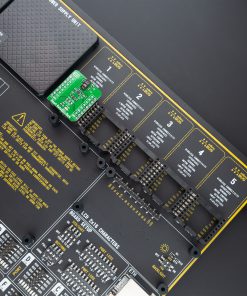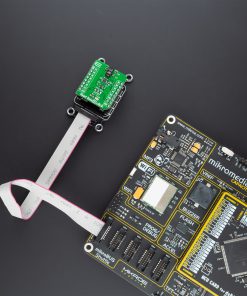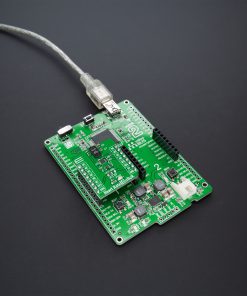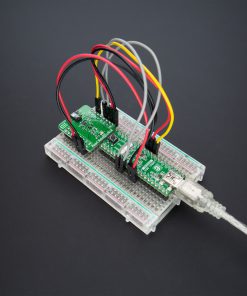Heart Rate 10 Click
R895.00 ex. VAT
Heart Rate 10 Click is a compact add-on board suitable for heart rate monitoring applications. This board features the MAX86916, an integrated optical sensor with applications in bio-sensing, proximity, and color from Analog Devices. The module includes internal LEDs, photodetectors, and low-noise electronics with ambient-light-rejection circuitry and establishes communication to and from the module entirely through a standard I2C compatible interface. It operates on a 1.8V supply voltage with a possibility to be shut down through software with a near-zero standby current, allowing the power rails to remain powered at all times. This Click board™ is suitable for optical pulse oximetry and heart-rate detection applications.
Heart Rate 10 Click is supported by a mikroSDK compliant library, which includes functions that simplify software development. This Click board™ comes as a fully tested product, ready to be used on a system equipped with the mikroBUS™ socket.
Stock: Lead-time applicable.
| 5+ | R850.25 |
| 10+ | R805.50 |
| 15+ | R760.75 |
| 20+ | R732.11 |

